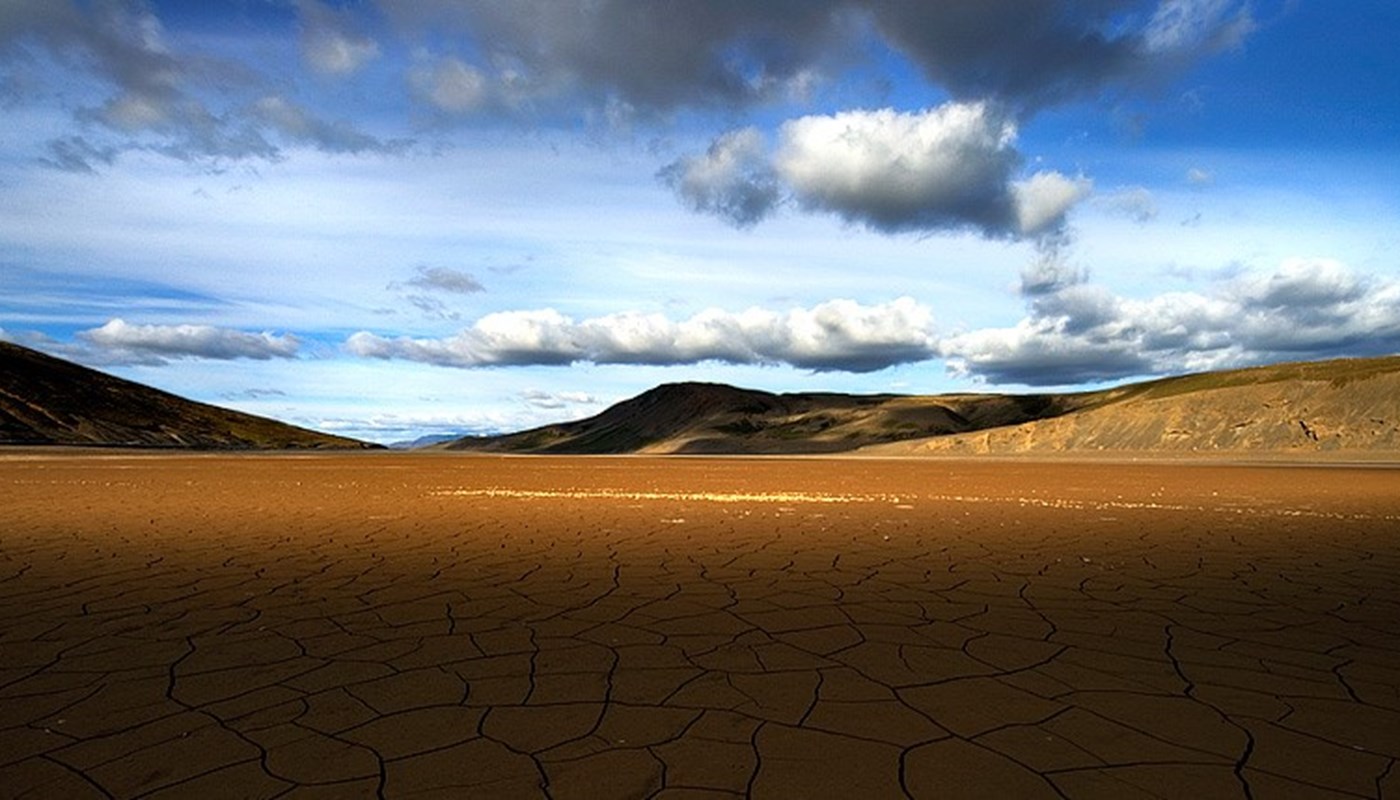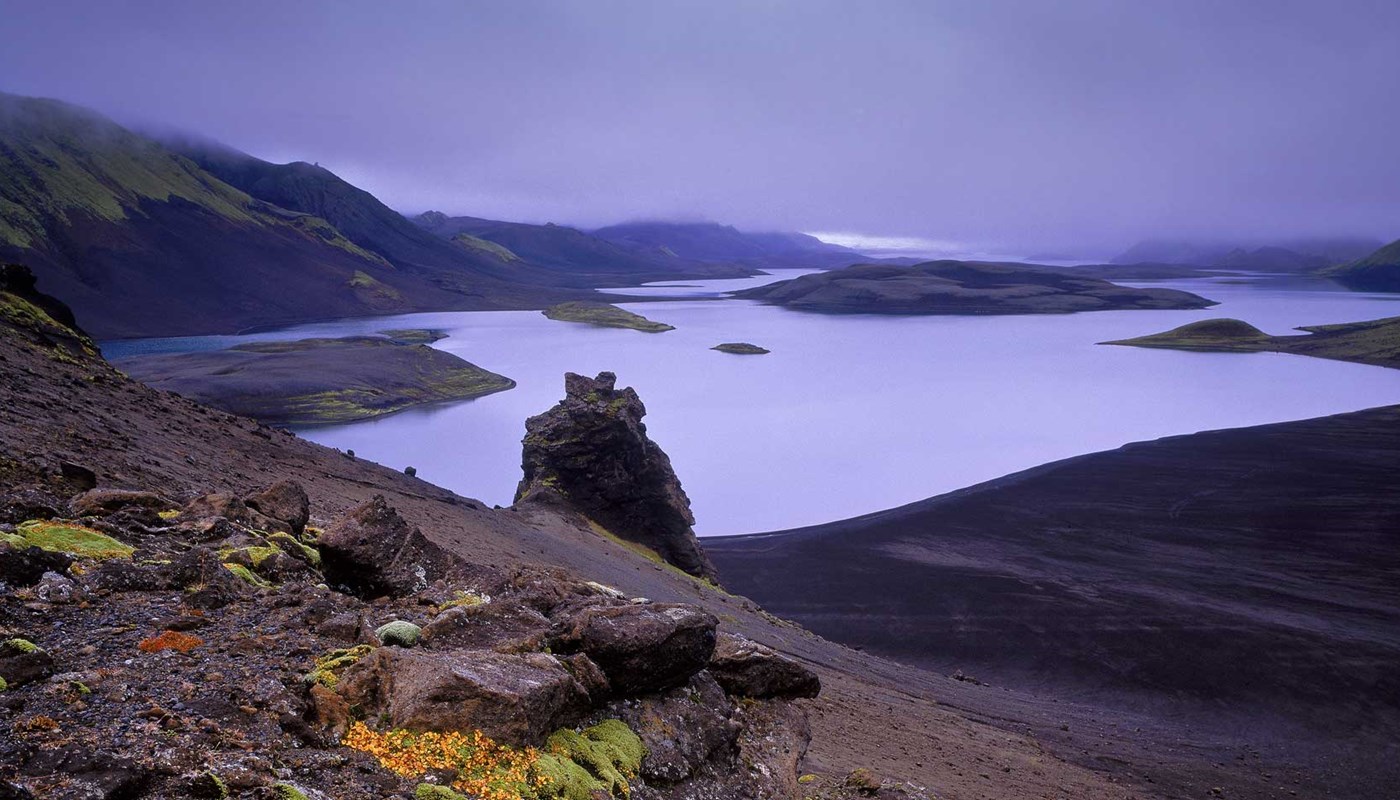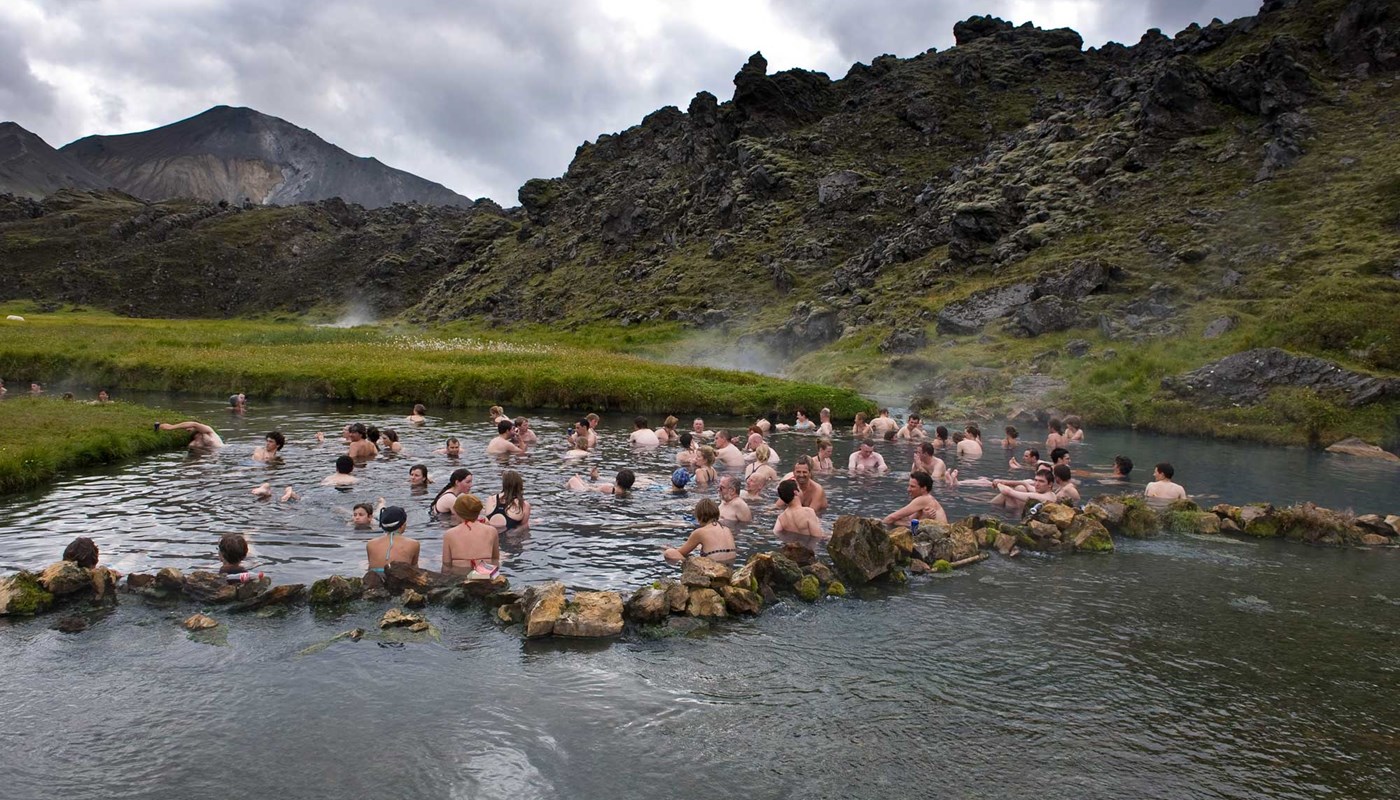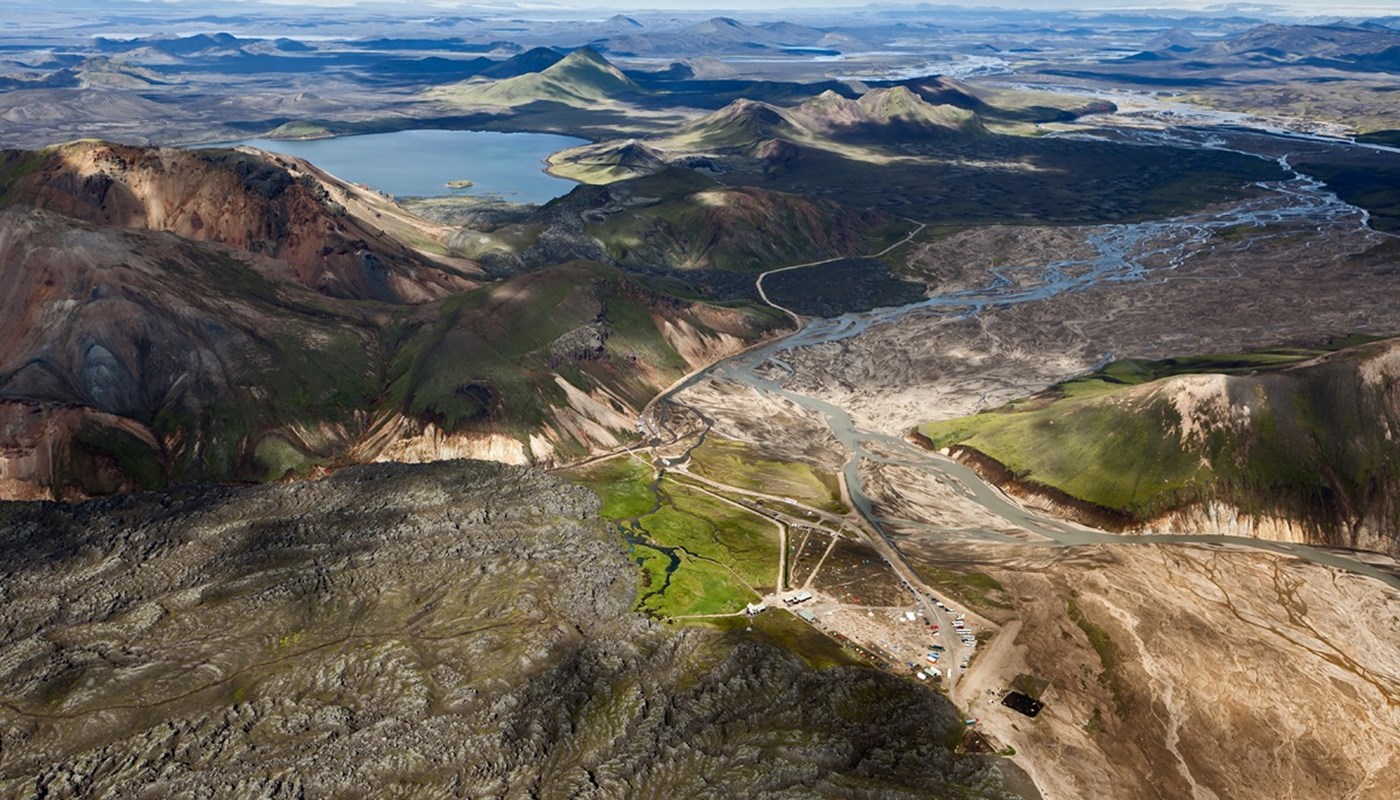THE GREAT ESCAPE
For centuries, the interior of Iceland was virtually inaccessible, for years at a time playing host only to outlaws in hiding. Via the mountain roads Kjölur and Sprengisandur, the untouched wilderness of Iceland's mountainous centre is now open to the general public—for cautious exploration by foot or 4x4 vehicles—in the summer months.
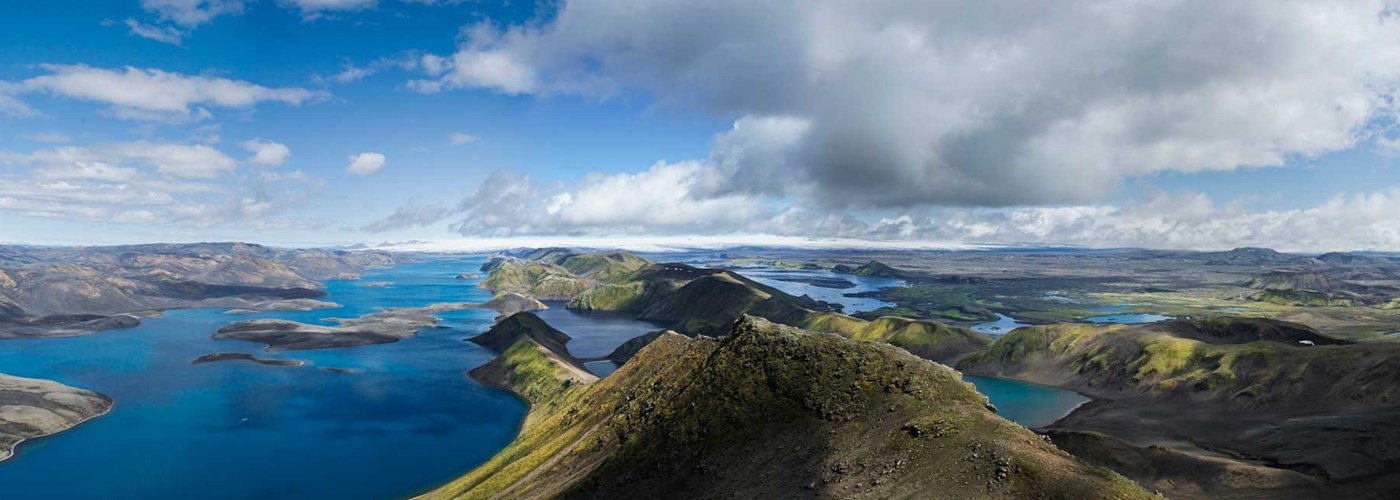
Surrounded by obsidian and colorful rhyolite mountains, visitors can bathe in natural hot rivers in the geothermal area of Landmannalaugar. From there, the Laugavegur trail leads to the woodland nature reserve Þórsmörk—a hidden valley surrounded by mountains, glaciers and glacial rivers—that serves as a popular base camp for hikers who intend to reach the surrounding highland mountains.
THE HIGHLANDS OF ICELAND ARE AN UNTAMED MINGLING OF ROCKY DESERTS, JAGGED PEAKS, VOLCANOES, ICE CAPS, VALLEYS AND HOT SPRINGS, THAT SHOULD BE EXPLORED AT ALL TIMES WITH RESPECT, CARE AND PREPARATORY MEASURES.
The highlands of Iceland are an untamed mingling of rocky deserts, jagged peaks, volcanoes, ice caps, valleys, and hot springs, that should be explored at all times with respect, care and preparatory measures.
Major towns
NONE
Regional airports
NONE
Major attractions
ASKJA, KJÖLUR, KVERKFJÖLL, LANDMANNALAUGAR, SPRENGISANDUR AND ÞÓRSMÖRK.


